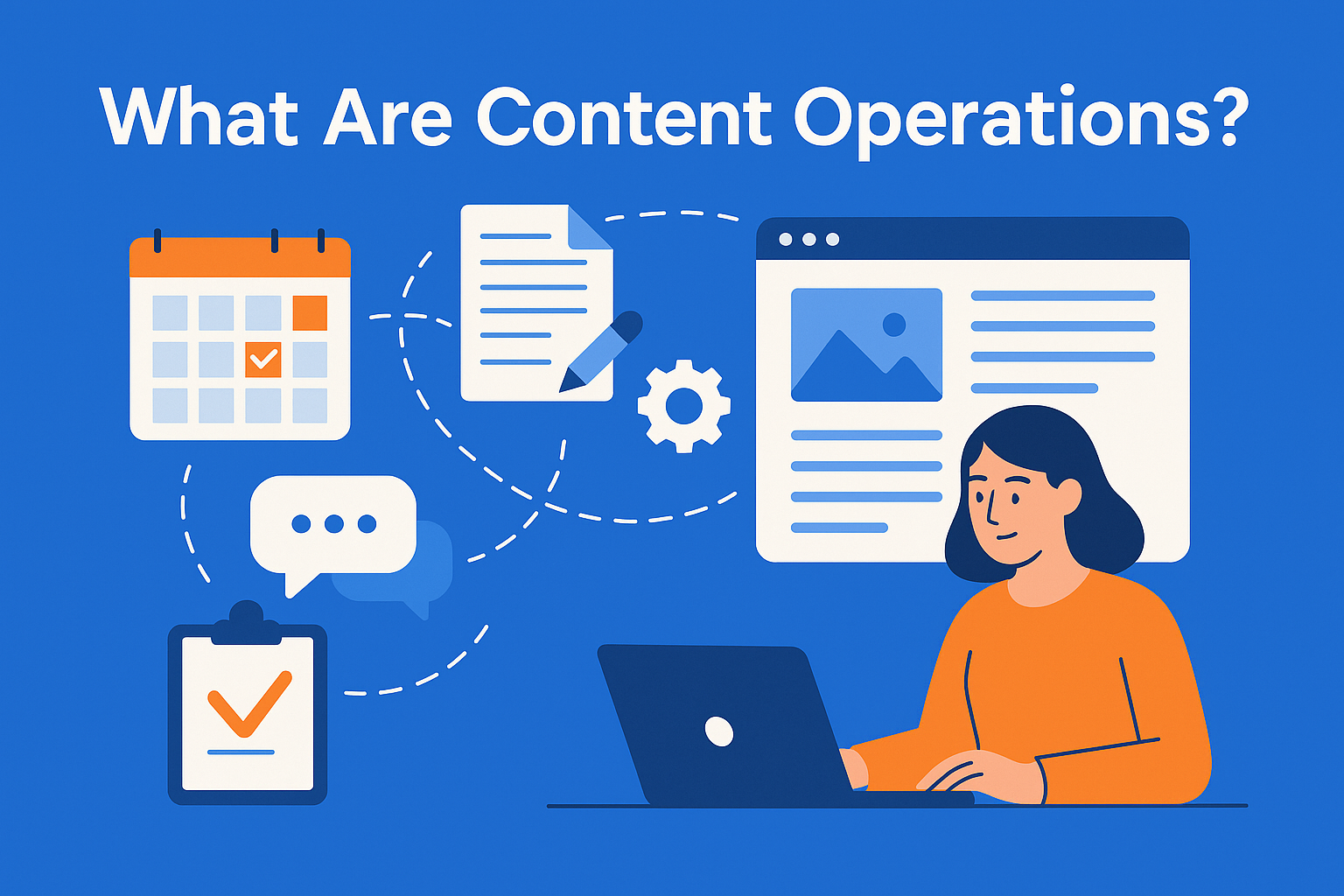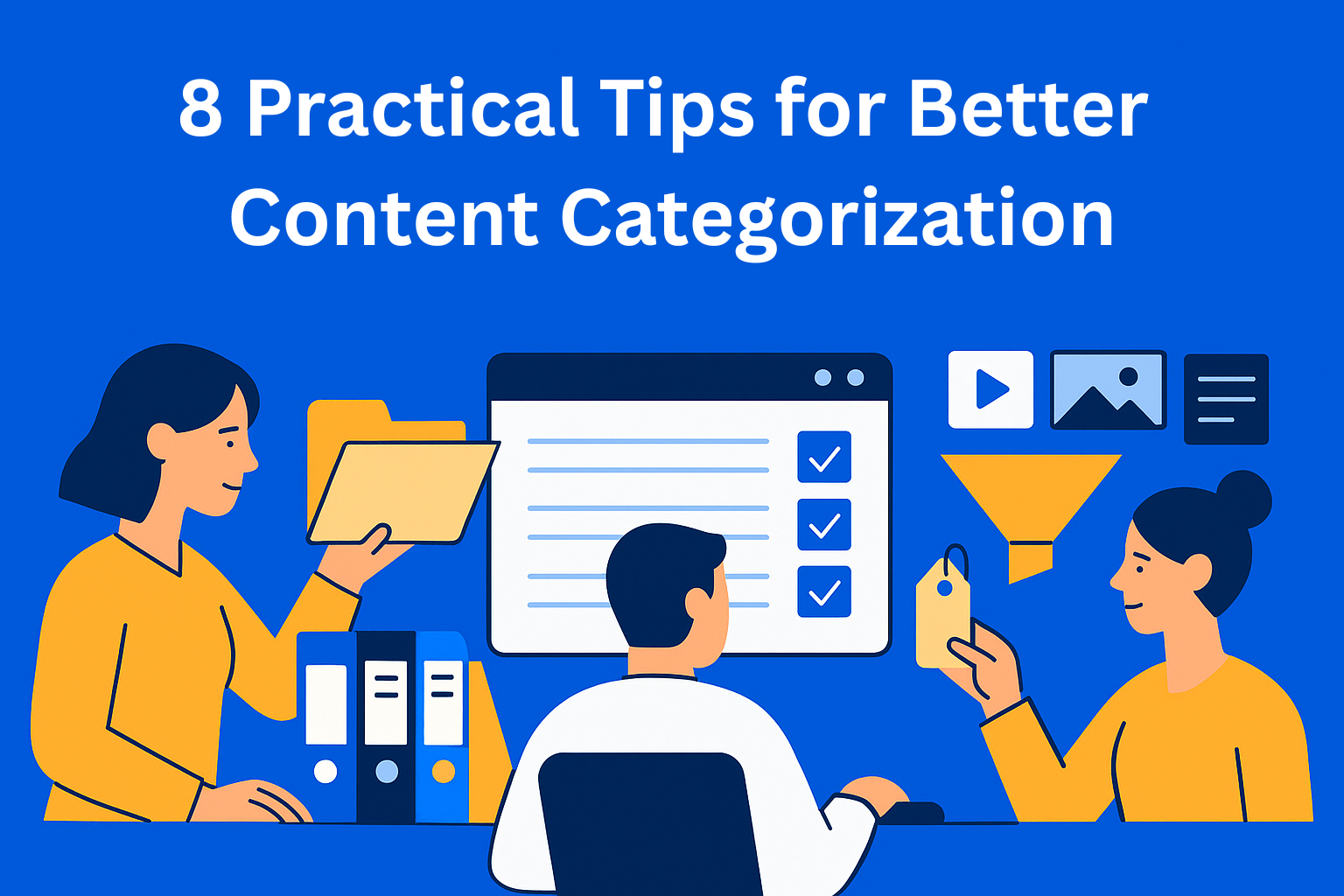What Are Content Operations?
Tired of content chaos? ContentOps brings order to the madness - aligning people, processes, and tools so your content workflow actually works. Learn why ContentOps matters and how platforms like EasyContent keep your team in sync.

Does it ever feel like your content workflow is more chaotic improvisation than an actual content workflow? Like someone tossed your blog calendar, design files, and copy drafts into a blender and hit "puree"? You’re not alone.
That’s where content operations step in, the engine behind the scenes that allows creation, collaboration, and content delivery to work like a well-oiled machine, with a solid dose of strategy.
In this guide, we’ll explain what ContentOps really means, why it’s becoming more important for content creation teams, and how tools like EasyContent help make it all work.
Key Takeaways
- ContentOps brings order to chaos - It aligns people, tools, and processes for smooth content production.
- If you’re chasing files and approvals, you need better ops - Disorganization is the #1 sign your workflow needs structure.
- Clear roles prevent confusion - Writers, editors, reviewers, and publishers all need well-defined responsibilities.
- A visual workflow keeps everyone aligned - From ideation to publishing, visibility reduces delays and errors.
- Tools like EasyContent unify your system - It centralizes tasks, feedback, templates, and version control.
- Standards matter - Use brand guidelines, templates, and style rules to stay consistent at scale.
- Performance tracking closes the loop - Monitor what works and feed that insight back into your content cycle.
- Good ops = less stress, faster publishing, better results - Build a scalable system that works even as your team grows.
So, What Are Content Operations?
Content operations, or ContentOps (if you’re part of the crew), represent the combination of people, processes, systems, and technologies that keep the entire content marketing machine running smoothly. If content strategy is what you’re saying, then content operations is how you say it - efficiently, precisely, and without anyone losing their mind.
It includes everything from your editorial calendar and task management, to brand guidelines and the content approval process. In other words, it’s the glue connecting planning and execution.
Why Content Operations Matter
Producing high-quality content at scale can easily spiral into chaos if you don’t have an aligned system. Today you’re planning a campaign, tomorrow you’re chasing a blog draft that disappeared into a pile of files. Deadlines get missed, feedback is scattered, and everyone’s working off different versions. Classic content chaos.
Good content operations fix that. When done right, they speed up publishing, increase quality, align the team with business goals, and generally save time.
The Core Pillars of Every ContentOps
A solid ContentOps system relies on five key elements.
First: people and their roles - everyone must know what they’re responsible for: who’s writing, editing, reviewing, and publishing.
Second: the workflow needs to be clear and visible, from idea to publication.
Third: is technology. That’s where EasyContent can help, by centralizing tasks, comments, and approvals. No more digging through Slack or folder chaos.
Fourth: are rules and standards, like a style guide, templates, and brand guidelines.
Fifth: is performance tracking, also known as content performance monitoring.
When Do You Know You Need Better ContentOps?
If you’re constantly asking where the latest version is, whether legal approved the content, or why everyone is using a different font, those are signs your ContentOps is struggling. If publishing requires three reminders, a sticky note, and a small miracle - it’s time for a system.
As every content team knows, a tool is only as good as the time and stress it saves.
EasyContent as the Backbone of Your Team
EasyContent isn’t just another tool, it’s the center of your content stack. It allows task assignment, setting deadlines, using templates, giving feedback, and managing versions - all in one place.
You can integrate it with the tools you already use. It brings in structure that prevents mistakes and overlaps. Even when your team works across time zones or departments, everyone stays on the same page.
Final Thought
Content strategy gives direction, but ContentOps provides the engine. You need both to build a sustainable content process.
When you empower your team with strong ContentOps, you won’t just create better content - you’ll do it faster, with less stress, and fewer bottlenecks. With the support of tools like EasyContent, your daily routine becomes scalable, clear, and functional.






